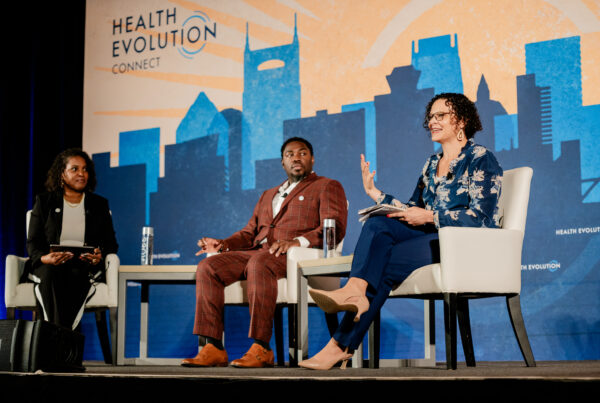Is population health stalling? Maybe it’s just slower to implement than originally expected because it’s really hard, according to one provider in the discussion “Provider Connect: Future Bets in Taking Risk” at Health Evolution Summit.
“Population health is a bad name,” said Nancy Howell Agee, who has served as president and CEO of Carilion Clinic since 2011. “It’s still about one patient at a time, and that’s what makes it expensive.”
Discussion moderator Bob Segert, Chairman and CEO of athenahealth, asked panelists at the Provider Connect session whether their population health efforts have stalled. “We did population health before we knew what it was,” Agee said. “It’s not so much stalled as matured and become part of our infrastructure.”
Carilion is a nearly $2 billion not-for-profit integrated health system headquartered in Roanoke, Virginia. It serves more than 1 million people in Virginia and West Virginia. Carilion Clinic includes seven hospitals, ranging from the third largest in Virginia to mid-sized community and small rural or critical access hospitals. The organization was an early participant in accountable care, but Agee said there’s still not a good way for government and commercial insurers to pay the costs of managing the health of populations. Her most recent contract negotiation with a large insurer was still based on unit cost. “Now we have tied ourselves into a five-year contract and we have feet in two different boats,” she said.
According to the fourth annual “State of Population Health” survey, released last month by Numerof & Associates in collaboration with David Nash, Dean of the Jefferson College of Population Health in Philadelphia, there has been little change since last year in the respondents’ ability to manage the cost and quality of care. Of the 523 provider executives who responded, three out of five said they were “moderately prepared” (the same percentage as last year), and there was also no improvement in their median assessments of how well their organizations measured cost (average) or quality (slightly above average).
Fewer than half of respondents reported that their organizations routinely used a process to identify outliers in cost and quality at the physician level, or had a process to address such variation when it occurred. Fewer than 40 percent said that compensation was linked to cost and quality performance for at least some clinicians. The majority of respondents said 10 percent or less of revenue came through risk-based contracts.
To illustrate the potential impact of a true population-health approach to care, Agee recounted the story of Myrtle, an 84-year-old widow living alone in a second-floor apartment with three chronic illnesses—diabetes, congestive heart failure and kidney disease—and an understandable fourth chronic condition, depression.
“We all know a Myrtle,” Agee said. “We tune her up at the hospital—we’re great at that, and we shouldn’t be embarrassed about it—but then we send Myrtle home.” At home, even with some attention from a home health nurse, she soon needs to return to the hospital when her heart condition becomes acute. The next time, more coordinated care kicks in: a case manager in the ER arranges for a pharmacist to come to her house after discharge to make sure she’s taking her medications correctly, and a networked scale alerts her primary care physician if she gains two pounds in a short period—a signal that she’s headed to the hospital soon.
But what really turns the tide, Agee said, is a question from the case manager about the things Myrtle used to enjoy doing. “Going to church,” Myrtle says. The case manager finds a church nearby that has services Wednesday nights, with a supper beforehand. The church is happy to have Myrtle, and arranges for her to get a ride every week. Then the Brownie troop associated with the church, which has an “adopt a grandparent” program, adopts Myrtle, leading her to have regular young visitors at her house. A year and a half goes by, and Myrtle hasn’t been in the hospital once.
“We haven’t cured her, but her story is much better,” Agee says. “But that’s how hard it is, and it’s not what we are normally set up to do.










